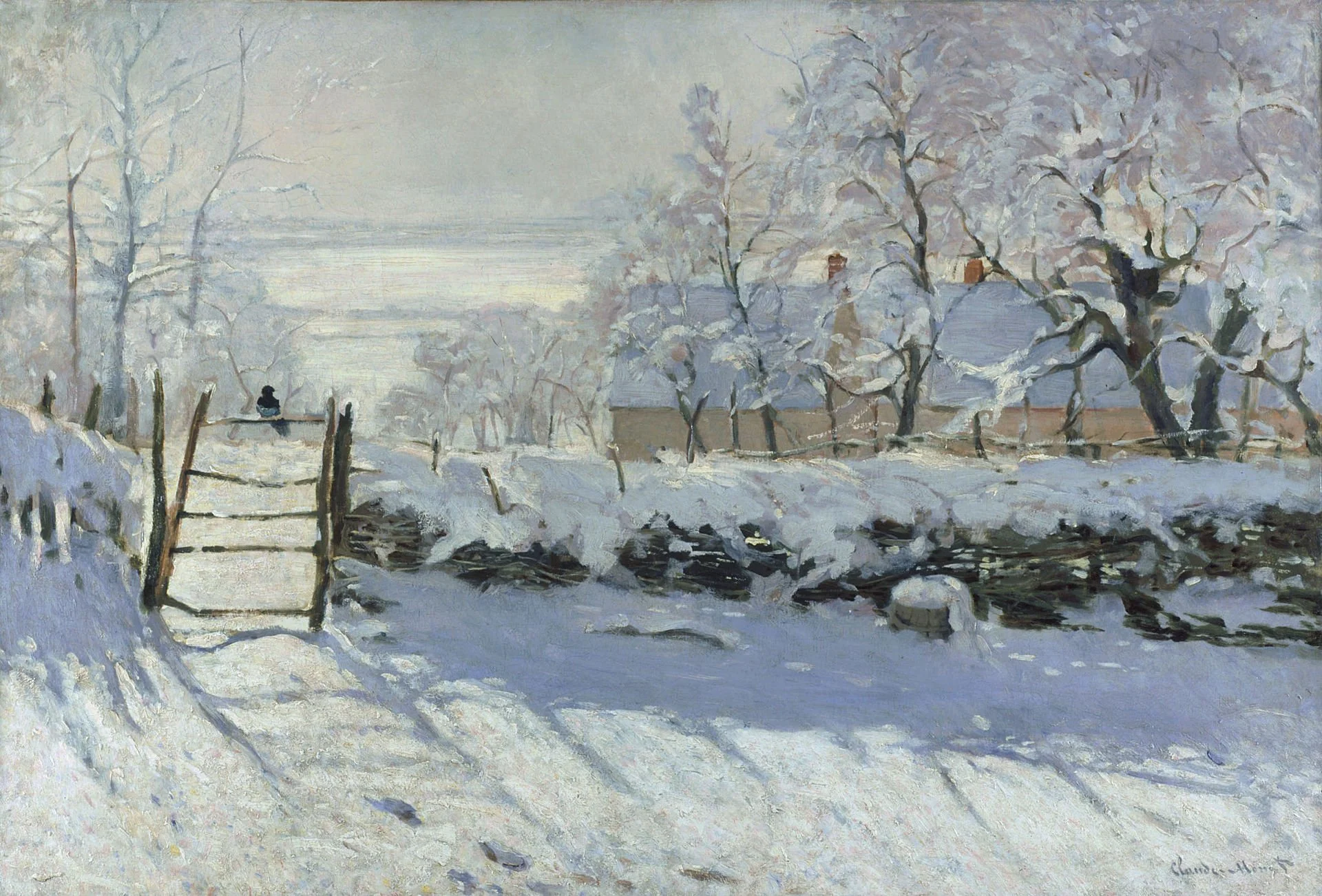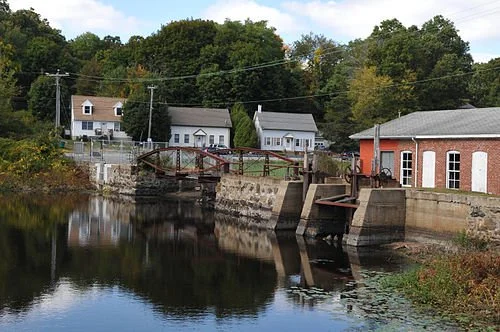
‘Glad of the burn’
“The Magpie,’’ by Claude Monet (1869)
Preston City Congregational Church
“I crouch down in blank
snow, glad of the burn
of cold air in the west,
the border of trees
black and still.’’
— From “Beginner’s Mind,’’ by Margaret Gibson (born 1944). She’s poet laureate of Connecticut and an emeritus professor at the University of Connecticut. She lives in Preston, Conn.
In the Hallville Mill Historic District, in Preston.
Information below is mostly an edited-down version of a Wikipedia entry on Preston.
“Properties in the district include 25 structures on a 50-acre site. The district includes the dam forming Hallville Pond (a mill pond — above), historic manufacturing buildings and worker housing, and the Hallville Mill Bridge, a lenticular pony truss bridge built circa 1890 by the Berlin Iron Bridge Co.
“The first mill there was built in 1752 for finishing locally produced homespun woolen cloth, with carding machines added in the early 19th Century.
“In 1857 Joseph Hall Sr., a weaver born in England, built an industrial-scale woolen mill on the site. The mill remained under his family's ownership under the name Hall Brothers' Woolen Mill (named for the founder's sons) and was expanded over the years. As of 1888 the mill employed 175 workers and produced 860,000 yards of cloth annually. The mill burned down in 1943, but manufacturing continued in Hallville until the 1960s and was a major source of employment and tax revenue for Preston.’’
It’s a classic small New England mill town. Sadly, the huge and sleazy Foxwoods casino is all too close, in Ledyard.
‘Grand and numb’
“Self-portrait’’ (with hourglass and skull) by Johann Zoffany, circa 1776
“Now morning
snow falls like sand in an hourglass
close-up. History is pain in movement,
Burkhardt said. It was his face in the dream.
My feet touch the cold floor. I move into a day
that opens like any other in history, grand and numb.’’
From “Cold Wars Inside,’’ by Margaret Gibson (born 1944), Connecticut’s current poet laureate. She teaches at the University of Connecticut and lives in Preston, Conn.
Congregational church in Preston, in a rural/exurban part of eastern Connecticut
Owaneco, son of the Mohegan sachem Uncas, gave a confirmatory deed for the land of what became Preston in 1687. In October of that same year, the town was incorporated as Preston, named for the English city of Preston, Lancashire, England, whence came some of the white settlers.
Early trades in the area included shoe making, metal smithing and brickmaking.




